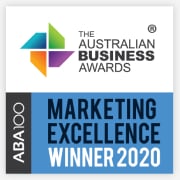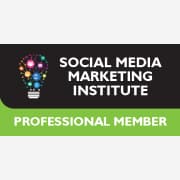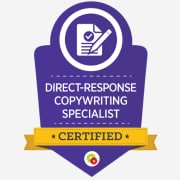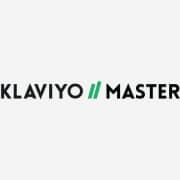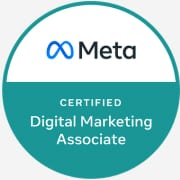Facebook Ads Learning Phase
Ever been on a roll with Facebook advertising only to have performance drop when you scale up your daily spend, edit your audience, or add a new ad?
Welcome to Facebook’s Learning Phase.
Friend or foe?
It depends whether you’re playing by the rules, or breaking them.
In this blog post, I’ll help to ensure you’re working together with the Learning Phase and avoid unnecessary ‘Significant Edits’ that will punish performance.
What Is Facebook’s ‘Learning Phase’?
Facebook has a very complicated algorithm, or ‘ads delivery system’ that is working hard to try and give advertisers the best possible result.
When your ads are delivering, the ad algorithm is learning and optimising performance based on variables such as:
- the best time of day;
- the best placement (Instagram feed / Facebook desktop right-hand column etc);
- the best creatives; and
- the best people to target.
In my last blog post, I emphasised the importance of not over-optimising your campaigns.
That blog post spoke more from the perspective of deactivating ads before you have enough data to be making that decision, and best practice is to just leave your ads alone for a few days.
The Learning Phase is the next reason that you may need to practice patience, because if you make a significant edit to your ad set and re-enter the learning phase before you exit it, your optimisation decision may not have been made on sound data.
The learning phase starts when your ads are active and triggers again if you make a significant edit. When performance stabilises, your ad sets will exit the learning phase.
It generally takes around 50 optimisation events within a 7-day period to exit the learning phase.
Check the Delivery column when viewing your ad set to monitor the progress of your learning phase. If you aren’t getting enough optimisation events (or Facebook predicts you won’t), the column will read ‘Learning Limited’.
The goal is to exit the learning phase as quickly as possible because the delivery of your ads has not been optimised effectively while you remain in it.
Facebook explains “ad sets in the learning phase are less stable and usually have higher CPA.”
What Are Significant Edits?
Every edit you make to your campaign, ad set or ad will impact performance in some way, but a ‘Significant Edit’ causes your ad sets to re-enter the learning phase.
Significant edits can be at all three levels of your campaign, including:
Ads:
- ANY change to your ad creative
Ad Sets:
- Targeting
- Pausing for over 7 days
- Bid strategy
- Bid amount (depending on how much)
- Spending limit amount
- Placement
- Optimisation event
- New creative
- Budget (more than 15% to 20% I’ve found)=
Campaign:
- Budget
- Bid strategy
- Bid amount
The truth is, it’s highly unlikely you’ll be able to create a campaign, enter and exit the learning phase, and never re-enter it… ad fatigue can occur, creatives may need to be updated, and ad sets may need to be optimised.
Testing is a natural part of the optimisation process.
Re-entering the learning phase is optimisation’s collateral damage.
The best thing you can do is to be conscious of the learning phase, play by the rules the best you can, and batch together your changes so you can make them all at once.
It’s worth noting too, if you make a significant edit to one of the ad sets, it will not cause the others to re-enter the learning phase. The same goes for adding additional ad sets.
And if you’re using Conversion-Based Optimisation (CBO), your ad sets will not re-enter the learning phase as the budget continues to distribute over time.
How to Quickly Exit the Facebook Learning Phase
To exit the learning phase, you need around 50 optimisation events within a 7-day period.
Obviously having a high budget will speed this up, however, another key consideration is how many ad sets you have in your campaign. More ad sets means your budget is spread thinner between each. Ensure you have enough budget for each ad set to exit the learning phase.
You may create more ad sets than you need so you can do more testing upfront, knowing you’ll deactivate poor-performing ad sets, but just remember, you may not have given the ad set a fair run if it hasn’t exited the learning phase yet.
So choose your ad sets wisely… check for audience overlap and consider combining ad sets (or excluding one from the other) if the audience overlap is >20%.
Also, choose your conversion event wisely… If you’re an eCommerce business, you’ve selected the Purchase event, and you’re not getting enough optimisation events, try changing the event to one that’s back a stage or two in the checkout process, such as Initiate Checkout or Add to Cart.
If you’re a service-based business and you’re generating Leads or Subscribers, you could create a ‘View Content’ event on button clicks or landing pages to increase the number of conversion events.
Other reasons you may not exit the learning phase include:
- Audience is too small
- Low quality ads are eating up your budget
- Manual bids are too low
- Cost cap is too low
- Too many ads in the ad set
Begin with the End in Mind
Plan your budget, your hypothesis, your creative, your messaging.
Combine your audiences and campaigns where you can.
Choose your conversion event and when you will batch together changes.
This way, you can work with the learning phase, rather than against it.
Don’t have the time to keep on top of it all and would like to know more about how my team and I can help?
Simply click here to book a quick 15-minute chat.
FREE SOCIAL MEDIA SESSION
We’ll help you build your campaign structure for FREE
Join the Conversation
Join the Social Media Training Facebook group to access videos (before anyone else) and ask your questions!
